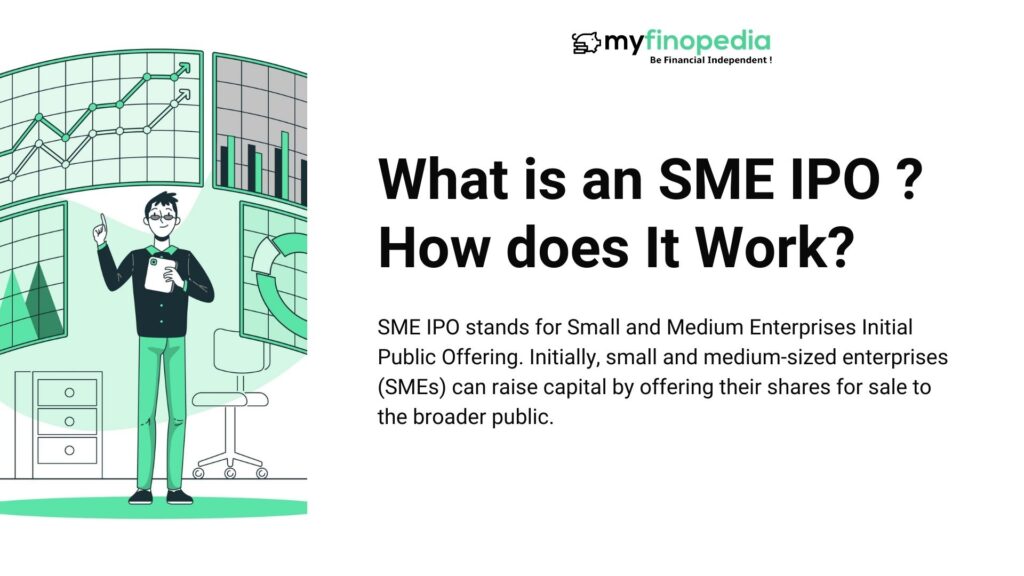Small and Medium Enterprises Initial Public Offering is referred to as SME IPO. Small and medium-sized businesses (SMEs) can raise money by first putting their shares up for sale to the general public. This is how it usually operates:
1. Preparation
The SME chooses consultants and underwriters to oversee the process, complies with regulatory regulations, and drafts a prospectus outlining the business’s operations, finances, and future goals.
2. Regulatory Clearance
The business applies for clearance from regulatory bodies, such as the Securities and Exchange Commission (SEC) in the US or the Securities and Exchange Board of India (SEBI) in India, for its prospectus.
3. Marketing and Roadshows
In order to draw in possible investors, the company and its underwriters carry out marketing campaigns and roadshows after receiving approval. In order to spark interest in the offering, these roadshows entail presentations and meetings with retail investors, high-net-worth individuals, and institutional investors.
4. Pricing
The company and its underwriters set the final offer price for the shares based on input from investors and the state of the market. This price establishes the amount of capital that the company hopes to raise and represents its valuation.
5. Allotment
The underwriters distribute shares to investors who took part in the offering when the IPO concludes. While the exact method of allocation may differ, institutional investors are usually given priority, followed by regular investors.
6. Listing
Lastly, a stock market, like the National Stock market (NSE) in India or the Bombay Stock Exchange (BSE), lists the shares. Investors are able to purchase and sell shares on the secondary market once they are listed. Through SME IPOs, SMEs can expand their reach and visibility while gaining access to a larger pool of cash. Nevertheless, the procedure can be expensive and complicated, requiring careful planning, adherence to legal standards, and cooperation with numerous players.






